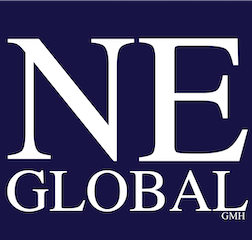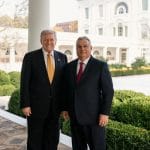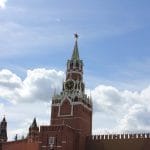Many are calling the June 24-25 NATO Summit in the Hague “the Trump Summit,” noting it was “historic” and “transformational.” But most of the one and two-word descriptions are just there to simplify the subject for the masses and speed readers. While not all allies agreed with some of the alliance’s new strategic decisions, the leader of one new member (Finland) declared, “We’re witnessing the birth of a new NATO.” As the President of one of NATO’s newest entrants, Alexander Stubb can be excused if he appeared somewhat overenthusiastic about the Summit, which was in fact a strong tendency for many of the NATO countries closest to Russia.
For others however, the Hague Summit was simply “good enough” which may be all that is needed in view of the current lineup of alliance leaders. With only five paragraphs and 427 words, NATO’s Hague Summit Declaration is the shortest in recent years, with the next closest being the 2022 Madrid Summit Declaration coming in at 1918 words. One thing is clear however, there was absolutely no shortening of lines at Summit security checkpoints all over The Hague.
Increased defense spending and an assortment of special provisions
The key take away and an important triumph for U.S. President Donald Trump was the Summit’s decision to sharply ramp up allies’ defense expenditures to 5 percent of GDP with several key provisos, by 2035. But that magic 5 percent number is actually an amalgam of normal defense expenditures plus many types of strategic infrastructure projects. The actual NATO decision takes allies from the current 2 percent target for defense spending to 3.5 percent of GDP by 2035 with an additional 1.5 percent of GDP focused on infrastructure projects that make troop deployments faster and easier, mainly roads, bridges, airfields and various transport hubs but also defense-related social spending and funds dedicated for the protection of cyber networks. The 3.5 percent defense spending number will now be calculated to include military aid to Ukraine as well.
Annual plans will be required from each alliance member for most of the NATO spending objectives. Progress in actually meeting the new targets is set to be reviewed in 2029, conveniently programmed to take place after the next U.S. Presidential election.
The scale of NATO’s new project is vast: To get to 5 percent requires $1.9 trillion in additional annual spending across NATO.
As is the case in almost all multilateral agreements, the devil is in the details. As for the 3.5 percent of GDP core defense spending target, the metric to be used is the agreed definition of NATO defense expenditures plus any military support given to Ukraine, including its defense industry.
Far less well defined is the target for the additional 1.5 percent of GDP for defense infrastructure expenditures. Obviously negotiated to leave the door open to a wide range of investments, the Hague Summit Declaration states: “And Allies will account for up to 1.5 percent of GDP annually to inter alia protect our critical infrastructure, defend our networks, ensure our civil preparedness and resilience, unleash innovation, and strengthen our defense industrial base.” It is clearly possible to fit almost anything into some of these expenditure categories, which explains the lack of clear definitions, and it will be understandable to all that creative diplomacy and accounting will be needed to attain these targets in some of the 32 members of the world’s biggest security organization.
The NATO collective defense commitment will never fade
Another major success of the Summit from the NATO perspective, especially in light of a possible Russian threat, is the strong “ironclad” commitment to collective defense as expressed in Article 5 of the Washington Treaty. The Summit Declaration states, “We reaffirm our ironclad commitment to collective defense as enshrined in Article 5 of the Washington Treaty – that an attack on one is an attack on all. We remain united and steadfast in our resolve to protect our one billion citizens, defend the Alliance, and safeguard our freedom and democracy.”
Some would see this as the latest form of “Trump-proofing,” which was of course the main objective of the 2024 NATO Summit in Washington led by then-President Joe Biden. But it obviously works for the Trump White House as well. Future transatlantic cohesion will hinge on how U.S. policy continues to evolve under Trump.
More than a sideshow: The Israel-Iran war and ceasefire
As one might expect, the Israel-Iran conflict, and its global impact, was a key talking point during the Summit. In fact, Trump arrived in The Netherlands only hours after issuing a public rebuke of Israel and Iran amid allegations of cease-fire violations and threats of further military action, none of which actually occurred during the Summit.
On the U.S. strikes, Trump had asserted in Washington that the strikes “totally obliterated” the three key Iranian nuclear facilities. While at the NATO Summit, Trump doubled down on his previous statements, claiming that the operation “was very, very successful. It was called obliteration. No other military on Earth could have done it.” Nonetheless, Trump was troubled by a leaked U.S. intelligence assessment on the Iran strikes which suggested that they were not as effective as initially thought, and claims that much of Iran’s enriched uranium had been removed from the facilities before they were bombed.
In a press encounter alongside a meeting with NATO Secretary General Mark Rutte, Trump likened Israel and Iran to “two kids in a school yard” who “fight like hell.” Rutte, referencing Trump’s use of U.S. airpower and strong language in his statements on social media, said: “Then daddy has to sometimes use strong language.” Even before that statement, Rutte had been frequently described as “deferential” when it came to Trump.
On Iranian oil, a key global economic issue, Trump was queried at NATO about new sanctions on Iran, which the U.S. has continued to promulgate in recent months, and Tehran’s capability to continue selling oil to China, now its main oil buyer. “I could stop it if I wanted and sell China the oil myself. I don’t want to do that,” Trump said. “We’re not taking over the oil. We could have, you know, I used to say with Iraq, “keep the oil.” I could say it here, too.”
Nonetheless, numerous observers are questioning why Iran’s oil export infrastructure was left relatively undamaged by Israel during the first phase of the so-called “12-Day War.”
What about Ukraine?
Some argue that this Summit meeting allowed the Ukraine war to be sidelined, and no substantive action was taken on Russia. In fact, Washington had earlier blocked a long-planned effort to promulgate an Alliance strategy against Russia at the 2025 Summit; in addition, Secretary of State Marco Rubio strongly reiterated U.S. opposition to imposing new economic sanctions on Russia. This opposition will only change when Trump reverses course at some point in the future. In a similar vein, no new U.S. security assistance package for Ukraine was announced at the Summit, and since then deliveries have slowed.

To avoid provoking Trump on the question of Ukraine’s NATO membership, NATO decided to limit the role of Ukrainian President Volodymyr Zelenskyy to side events during the Summit. This decision, taken as Ukraine faces the most savage Russian bombing campaign of the war, could only be welcome in Moscow, according to the Atlantic Council’s Ambassador John Herbst.
After meeting with Zelenskyy, Trump left open the possibility of providing more funds and even Patriot batteries for Ukraine’s defense, but he might have gone further, for example by reviving his proposal for a thirty-day unconditional cease-fire, threatening Russia with new sanctions if Russian President Vladimir Putin does not agree, and committing to provide Ukraine with a steady flow of US weapons one way or another. Still, according to the Atlantic Council, Trump appears to have moved from chilly hostility to Ukraine back to a supportive mode.
Spain’s credibility gap widens
Not everyone is on board with NATO spending plans. Spain, citing social cost concerns, was allowed an exemption and agreed instead to maintain defense spending at around 2.1 percent of GDP. The Spanish decision represents a self-inflicted fault line in the Alliance’s strategic center of gravity — consensus among thirty-two nations. It also drives Spain deeper into a credibility deficit with its European allies, especially those on the Alliance’s eastern flank.
According to analysts at the Atlantic Council, The NATO 5 percent goal was such a “sticker shock” to Spain because it was already starting from one of the lowest defense spending rates among NATO members, unwilling over the past decade to make incremental defense spending increases like other nations. Few countries will believe Spain’s assertion that it can meet its NATO capability targets with just 2.1 percent of GDP going to defense.
Standing up to the U.S. still plays well at home for Spain’s Prime Minister Pedro Sánchez, who as of late is seeking to draw attention away from a corruption scandal in his Socialist Party. Perhaps a visit from Donald Trump might be needed to generate progress.







